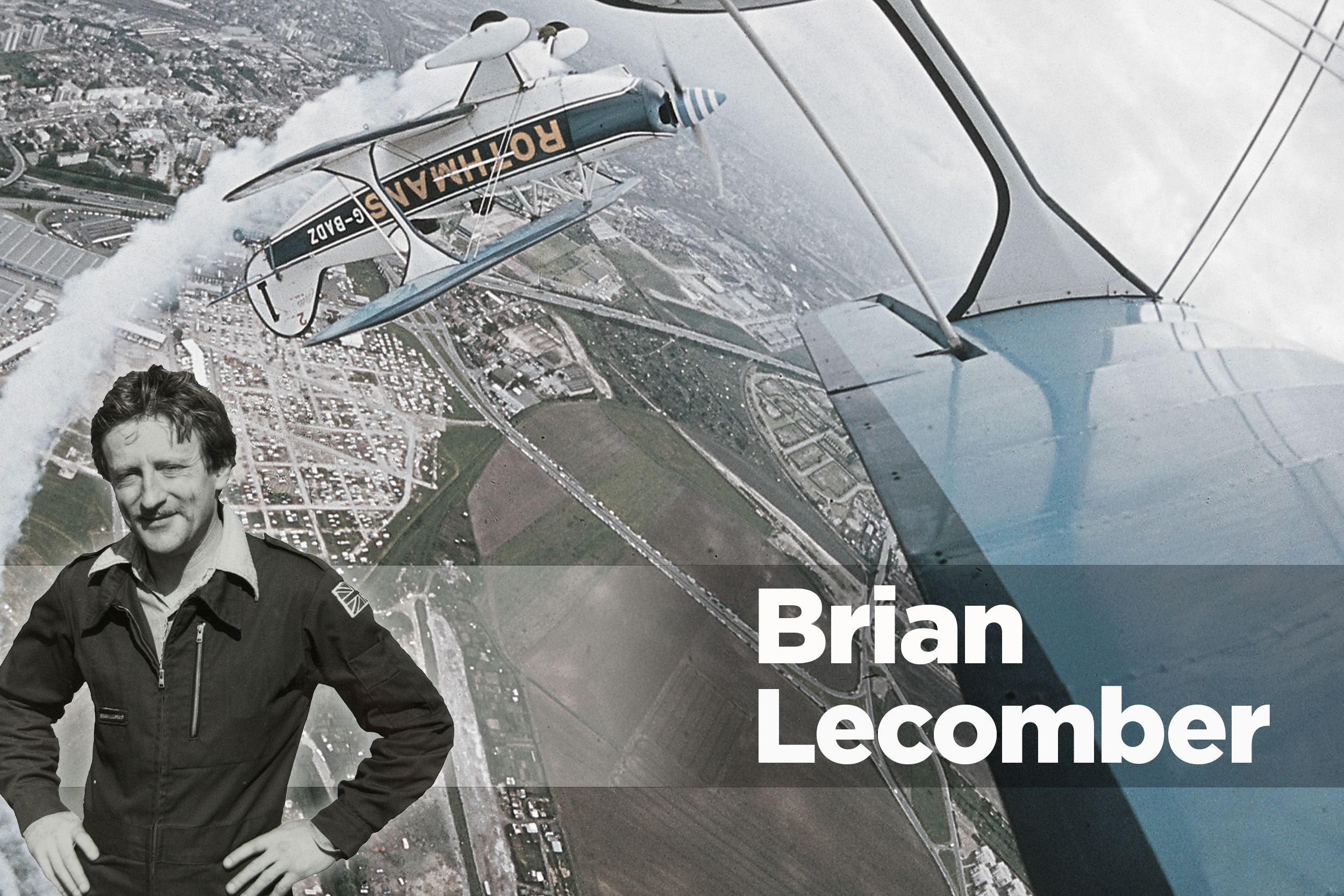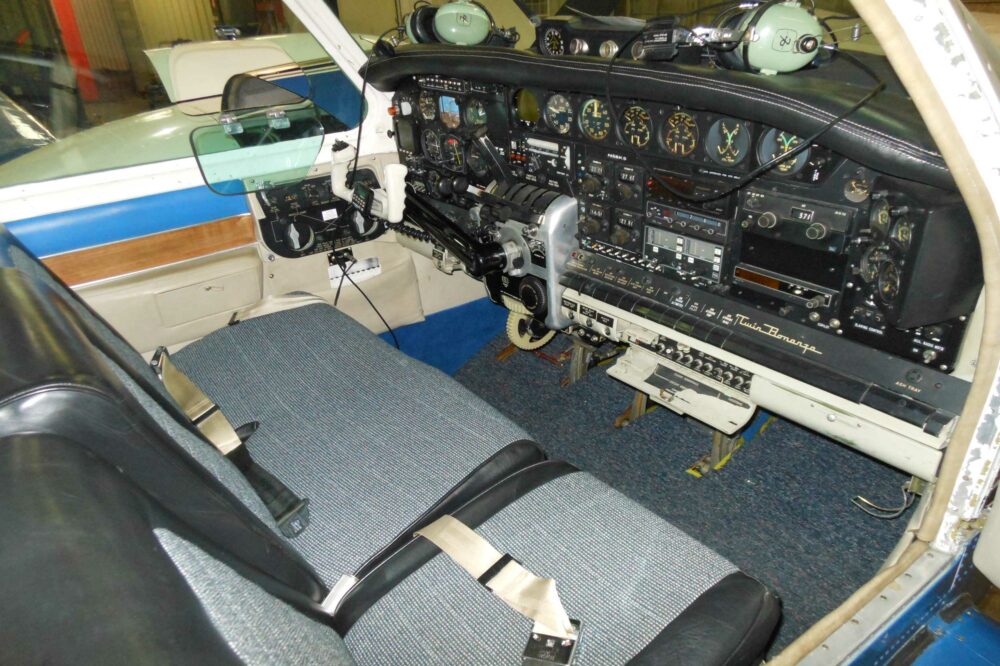I start the descent 30 miles out, very gently throttling back the roller-balanced engines, which do not appreciate abrupt power changes. Going down I can now see out forwards better. Gear and flap, sweep gently onto final approach, start the landing flare and e-a-s-e the throttles shut. Look to the side of the nose to judge the final hold-off.
And now the conspirators get together. There is no looking to the side of the nose.
Sitting too low in nearly the middle of this broad instrument panel, I look to my right and forward for my final height-cue.
And that long and hunchy right engine nacelle is bang in my line of sight. The nearest I can see anything forwards is about 80° to my right. And with the nose rising in the flare I, the short-ass, am completely blind forwards at a height of 10ft and descending.
Jesus!
I can only ease the power up as smoothly as my left hand can manage, and climb away. On instruments in the climb for exactly the same reason – I can’t see anything ahead.
Frank is silent throughout this brouhaha, since there is nothing he can do about it at this point thanks to the throw-over yoke. He waits until we are established in the climb, gear and flaps up, before he says, “Why did you do that?”
Later, over a beer, I explain. He finally delivers his verdict. “Should’ve eaten more greens as a kid. You’d be taller. But you did a good go-around.” He says nothing else, but does later invite me to fly his aeroplane again. Sitting in the correct place and at the correct seat-height it then becomes a benign flying machine instead of a tricksy prankster suddenly slapping a blindfold over your eyes at 10ft and chortling, “Guess who-oo?”
If one should be so bold as to teach flying to others, it can be said that any salutary lesson inflicted on oneself is a good lesson. Even if humiliating.
This inflicted lesson makes me think ever harder about landing.
In a couple of thousand hours of instructing I have long ago learned that the two major requirements for a satisfactory reunion with terra firma are (a), a good stable approach so that the assemblage arrives in a state of grace over the threshold at the right height and the right speed; and (b), that at the start of the landing flare the aviator must subtly but quite rapidly start changing where he or she is looking.
This is vital. Many a time and oft have I been handed a student who is reasonably competent in general flying but then gets all in a dither during the landing flare, resulting in either a bounce or a balloon.
And always – not just most of the time, but always – it came down to where the aspirant was looking.
As ever, divide the problem and conquer. On approach, you’re looking ahead, gauging the runway aspect. If the threshold’s going up the windscreen you’re low, if it’s going down you’re high. Non-rocket science.
Cut to the final hold-off of the landing flare, a foot or two above the deck. Now it’s no use trying to crane a foot taller to keep looking ahead over the nose (and instructors, the clue here is that they will always have their head tilted back if that’s what they’re doing). You have to be looking slightly sideways, alongside the rising nose, to fine-judge the last feet of height. Looking maybe a ‘cricket pitch’ ahead.
Why do you think all – almost all – instrument panels dip down at the corners, rather than a car’s panel which usually carries straight-across? It’s to give you that bit more of a sight-line alongside them. Not the whole picture – but it helps.
So that’s the two extremes – looking ahead on final and looking a cricket-pitch ahead forward but alongside the nose during the final hold-off. But in between…
In between – during the flare – is the trickier part, and most difficult to describe in words. You might say that at the start of the flare, maybe 20ft up, you slam your eyes down to the cricket-pitch ahead alongside. Well, that will work – and most certainly be better than trying to stare ahead throughout – but the truth is that as time goes on you learn to divide your attention and shift cues gradually from ahead to aside. Gradually being maybe a period of five seconds or so.
High-time pilots, think about what you do. And think, if you can, about how you could possibly put that into words for a neophyte.
If you can explain the peripheral cues you take in to yourself I would be surprised – and if you can explain them to someone else I will personally recommend you for the Nobel stop-landing-accidents prize. Me, I just sit there while the student teaches it to himself.
But instructors, I do have three things to say.
The first is to put the student in the aeroplane on the ground then walk out to where he should be looking at the fag-end of the hold-off, and tell him to look there. Which may surprise him. Secondly, make sure he or she is sitting at the correct height in the cockpit. Easier to ignore than you might think. Is his/her eyeline about the same as yours?
Lastly, bless those students who might have come to you from a previous experience of tailwheel aeroplanes. They won’t have the problem because it’ll never have occurred to them to look ahead anyway…
- This article first appeared in FLYER in May 2013.
- It costs just £5 per month to join The FLYER Club. You’ll get access to all of our content, our FREE landing fees every month, the weekly members’ Livestream on Wednesdays, plus our monthly webinar. Join today by visiting flyer.co.uk/membership








